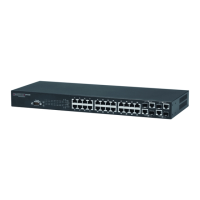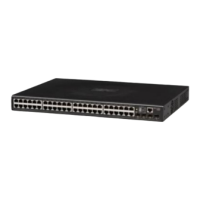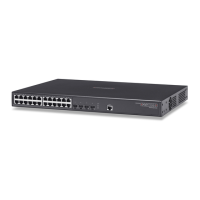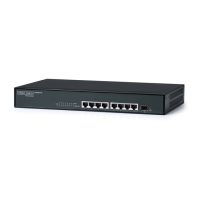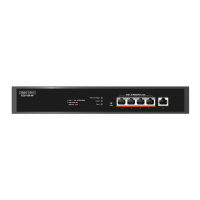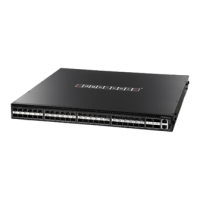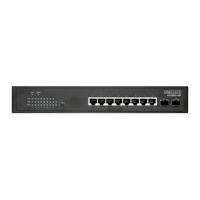– 811 –
34 ERPS COMMANDS
The ITU G.8032 recommendation specifies a protection switching
mechanism and protocol for Ethernet layer network rings. Ethernet rings
can provide wide-area multipoint connectivity more economically due to
their reduced number of links. The mechanisms and protocol defined in
G.8032 achieve highly reliable and stable protection; and never form loops,
which would fatally affect network operation and service availability.
The G.8032 recommendation, also referred to as Ethernet Ring Protection
Switching, can be used to increase the availability and robustness of
Ethernet rings. An Ethernet ring built using ERPS can provide resilience at
a lower cost and than that provided by SONET or EAPS rings.
ERPS is more economical than EAPS in that only one physical link is
required between each node in the ring. However, since it can tolerate only
one break in the ring, it is not as robust as EAPS. ERPS supports up to 255
nodes in the ring structure. ERPS requires a higher convergence time when
more that 16 nodes are used, but should always run under than 500 ms.
Operational Concept
Loop avoidance in the ring is achieved by guaranteeing that, at any time,
traffic may flow on all but one of the ring links. This particular link is called
the ring protection link (RPL), and under normal conditions this link is
blocked to traffic. One designated node, the RPL owner, is responsible for
blocking traffic over the RPL. When a ring failure occurs, the RPL owner is
responsible for unblocking the RPL, allowing this link to be used for traffic.
Ring nodes may be in one of two states:
Idle – normal operation, no link/node faults detected in ring
Protection – Protection switching in effect after identifying a signal fault
In Idle state, the physical topology has all nodes connected in a ring. The
logical topology guarantees that all nodes are connected without a loop by
blocking the RPL. Each link is monitored by its two adjacent nodes using
Connectivity Fault Management (CFM) protocol messages.
Protection switching (opening the RPL to traffic) occurs when a signal
failure message generated by the Connectivity Fault Management (CFM)
protocol is declared on one of the ring links, and the detected failure has a
higher priority than any other request; or a Ring – Automatic Protection
Switching protocol request (R-APS, as defined in Y.1731) is received which
has a higher priority than any other local request.
A link/node failure is detected by the nodes adjacent to the failure. These
nodes block the failed link and report the failure to the ring using R-APS
(SF) messages. This message triggers the RPL owner to unblock the RPL,

